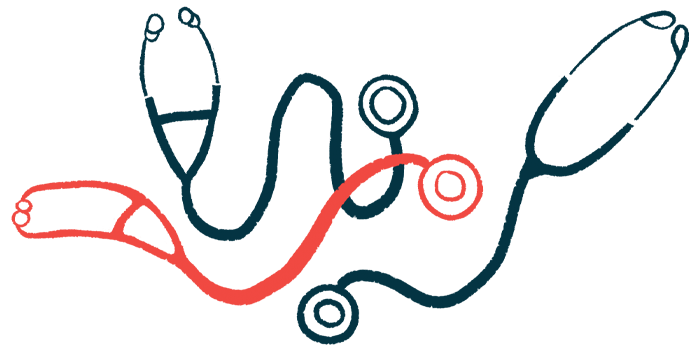Salivary gland ultrasound may help diagnose Sjögren’s syndrome: Study
Ultrasound may help screen people to avoid unnecessary, more invasive biopsies
Written by |

Ultrasound evaluation of the salivary glands may be useful for diagnosing Sjögren’s syndrome, a new study reports.
“Our results showed that [salivary gland ultrasound] may have a wide range of applications in the diagnosis of [Sjögren’s syndrome] due to its excellent interreader agreement and diagnostic performance,” researchers wrote.
Ultrasound may be particularly useful as a screening tool for people being considered for salivary gland biopsy, and help some patients avoid unnecessary biopsies.
The study, “Diagnostic value of ultrasound evaluation of major salivary glands for Sjögren’s syndrome based on the novel OMERACT scoring system,” was published in the European Journal of Radiology.
Diagnosis often involves biopsy of salivary gland
One of the most common manifestations of Sjögren’s syndrome is damage to the salivary glands, resulting in symptoms like a dry mouth.
Diagnosing Sjögren’s often involves a salivary gland biopsy, where a small sample of tissue from the gland is collected for laboratory analyses. However, a biopsy is a relatively invasive procedure that can be painful and can, in rare cases, lead to complications like nerve damage.
Ultrasound is a type of medical test that uses sound waves to form images of structures inside the body. Ultrasound of the salivary glands could offer an alternative to biopsy to detect Sjögren’s-related damage, but this would require a reliable system to score for disease-typical damage.
A working group of the Outcome Measurement of Clinical Trials in Rheumatology (OMERACT) had previously devised a grading system to assess salivary gland damage on a scale from 0 to 3, based on characteristic signs of tissue damage in the individual gland.
In this study, researchers assessed whether the OMERACT criteria could be used to distinguish people with and without Sjögren’s syndrome.
The study included data from 242 people (mean age of 43.8 years) who underwent ultrasound for four major salivary glands. Among the participants, 145 ultimately were diagnosed with Sjögren’s, while the remaining 97 had other health conditions.
The researchers noted that OMERACT scores were generally very consistent when ultrasound images were reviewed by different sonographers (medical professionals with a specialty in ultrasounds).
“Our results indicate that with simple training, the OMERACT scoring system can be used effectively by sonographers, and the resulting scores are stable and repeatable even for junior sonographers,” the researchers wrote.
Results showed that a cutoff of eight points on the OMERACT scale for the four major salivary glands could accurately identify about 76% of the people with Sjögren’s and about 90% of those who did not have the disorder.
OMERACT scoring system shows ‘excellent diagnostic potential’ for Sjögren’s
In statistical analyses, scores on the OMERACT scale showed moderately strong correlations with measures of saliva production. The scores also showed correlations with results from salivary gland biopsies, though the associations were not as strong statistically.
“The OMERACT scoring system has good sensitivity and excellent specificity, demonstrating excellent diagnostic potential for [Sjögren’s syndrome], and was effective in assessing salivary gland function,” the researchers wrote.
Given the high diagnostic accuracy of salivary gland ultrasound, especially for identifying people who do not have Sjögren’s syndrome, the researchers said this diagnostic test may be useful as a noninvasive screening measure for people who are being considered for salivary gland biopsy. Patients whose ultrasounds show signs of disease could go on for biopsy to confirm the diagnosis. However, if an ultrasound doesn’t show signs of Sjögren’s, then a biopsy would probably not be necessary as it will likely not show meaningful results, the researchers wrote.
“Of course, the actual clinical efficacy of this approach requires further investigation,” they added.




